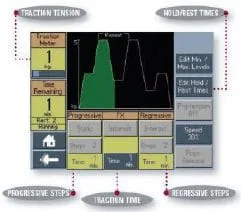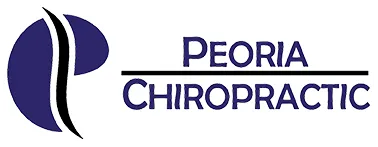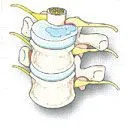
|
What is Spinal Decompression Therapy? |
|
Spinal decompression therapy is a non-surgical, comfortable traction therapy for the relief of back and leg pain or neck and arm pain. During this procedure, by cycling through distraction and relaxation phases and by proper positioning, a spinal disc can be isolated and placed under negative pressure, causing a vacuum effect within it. |
|
|
|
What can this vacuum effect do? |
|
The vacuum effect accomplishes two things. From a mechanical standpoint, disc material that has protruded or herniated outside the normal confines of the disc may be pulled back within the disc by the vacuum created within the disc. Also, the vacuum may bring more fluid within the disc. This may result in pain reduction and an increase in disk height. |
|
|
|
What machine is used for this purpose? |
|
There are a number of spinal decompression machines presently used in the United States. After significant research, Hopkins Clinic for Physical Medicine has chosen to use the Triton DTS machine manufactured by Chattanooga, Inc., the premier manufacturer of physical therapy machines. |
|
|
|
Who can benefit from Spinal Decompression Therapy? |
|
Spinal decompression therapy is designed to unload the spinal disc. Any back pain or neck pain caused in whole or in part by a damaged disc may be helped by spinal decompression therapy. These conditions include herniated, protruding or bulging discs, spinal stenosis, sciatica or radiculopathy (pinched nerves). |
|
|
|
Are there conditions where Spinal Decompression is not indicated? |
|
Spinal decompression therapy is usually not recommended for pregnant women, or patients who have severe osteoporosis, severe obesity or severe nerve damage. It is not recommended for patients over 70. However, every patient is evaluated on an individual basis. Spinal surgery with instrumentation (screws and metal plates or “cages”) is also contraindicated. Surgery to the discs without fusion or fusion using bony replacement is not contraindicated. |
|
|
|
How often do I take treatment sessions? How long does each session last? |
|
Each session includes decompression therapy, muscle stimulation and spinal stabilization exercises if indicated. Each session lasts approximately 35-40 minutes. Spinal decompression is usually performed 3-5 times a week for 15-20 sessions. |
|
|
|
What are the results of Spinal Decompression Therapy? |
|
Studies vary in improvement but In most studies, more than 70% of patients have good pain relief. See some of the clinical studies in detail by clicking on this link www.peoriadts.com/clinicaltrials.htm |
|
|
|
I have had spinal surgery, but continue to have pain. Can I try Spinal Decompression Therapy? |
|
Spinal decompression therapy may help people with back pain after failed spinal surgery. It can be performed in most patients who have not been left with an unstable or fused spine after surgery. |
|
|
|
How's does the therapy work? |
|
Research indicates the disc is responsible for a significant number of Lumbar/Leg pain and neck/arm pain syndromes. Compression increases intradiscal pressure leading to annular compromise and possible extrusion of nuclear material. Commonly known as a disc herniation or bulge.
|
|
|
|
When can I expect results? |
|
Clinical findings suggest Decompression will create a relatively quick initial response. Patients who will do well tend to feel a sense of relief (which can be direct pain cessation or a centralization of pain and/or reduction to an ache or stiffness) within six sessions. Full relief, if attainable through this passive treatment will usually be in 8-12 sessions. (Occasionally a 'stubborn' pain syndrome may continue to improve slowly over 15+ sessions though this is not the norm). Often patients will be treated 4-6 sessions and notice enough relief to allow active rehab to begin. Their Decompression may continue (pre or post rehab depending on the methods chosen) for 4-6 further sessions before discontinuing or reducing the frequency. |
|
|
|
What is the difference between decompression and conventional traction? |
|
Studies verify that spinal decompression demonstrates a significant reduction of intradiscal pressures into the negative range. Conventional traction has never demonstrated a reduction of intradiscal pressure to negative ranges; on the contrary - many traction devices actually increased intradiscal pressure, most likely due to reflex muscle spasm. The Decompression Table is designed to apply distraction tension to the patient’s lumbar spine without eliciting reflex paravertebral muscle contractions. |

